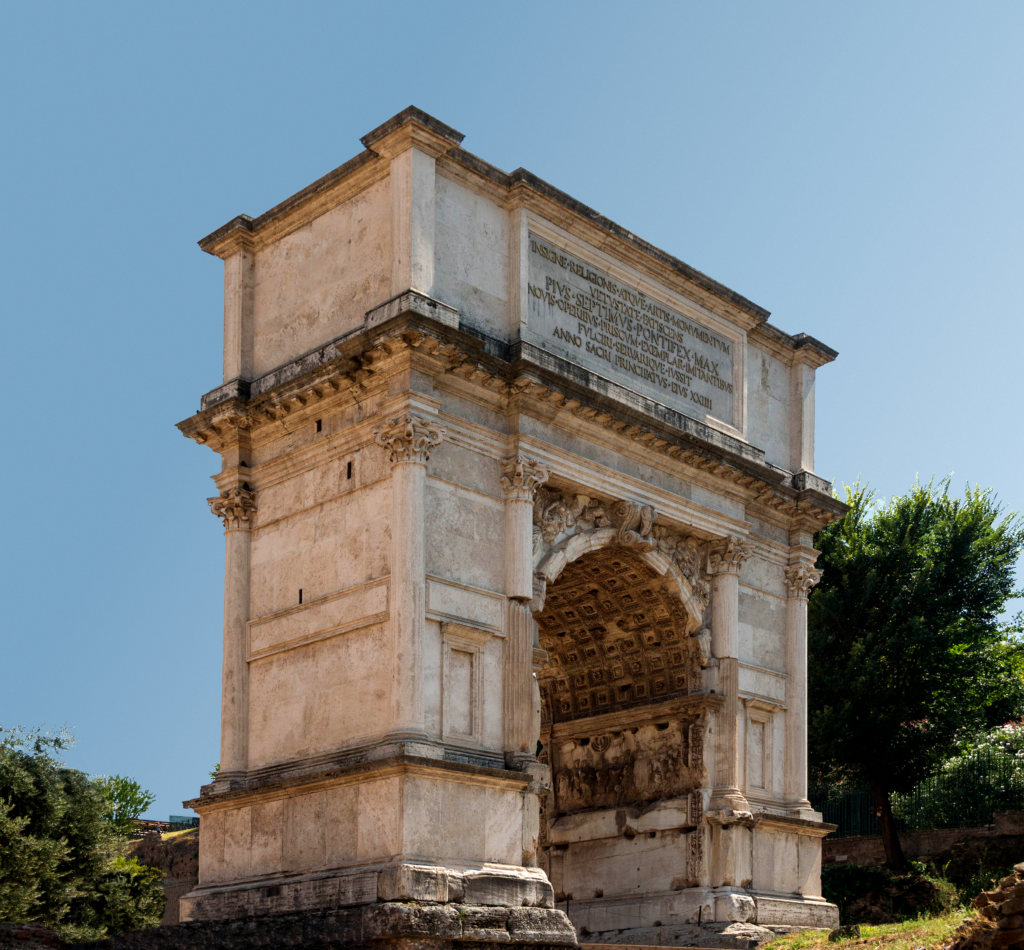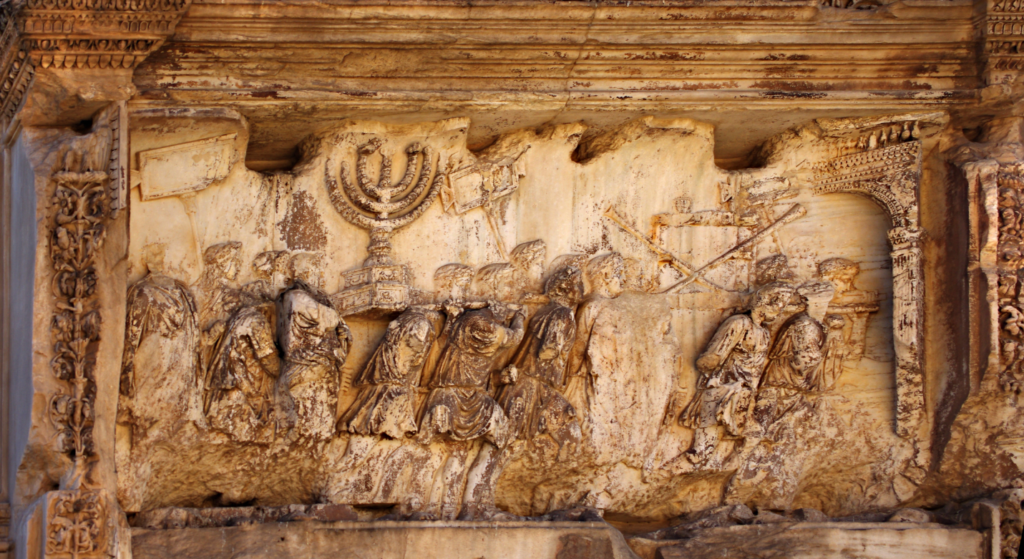
The Arch of Titus (Italian: Arco di Tito; Latin: Arcus Tītī) is a 1st-century AD honorific arch, located on the Via Sacra, Rome, just to the south-east of the Roman Forum. It was constructed in c. 81 AD by Emperor Domitian shortly after the death of his older brother Titus to commemorate Titus’s official deification or consecratio and the victory of Titus together with their father, Vespasian, over the Jewish rebellion in Judaea.
The arch contains panels depicting the triumphal procession celebrated in 71 AD after the Roman victory culminating in the fall of Jerusalem and provides one of the few contemporary depictions of artifacts from Herod’s Temple. Although the panels are not explicitly stated as illustrating this event, they closely parallel the narrative of the Roman procession described a decade prior in Josephus’ The Jewish War.

South inner panel, close-up of relief showing spoils from the fall of Jerusalem
By Paolo Villa – Own work, CC BY-SA 4.0
Josephus Jewish War 6.4.5 249-253
So Titus retired into the tower of Antonia, and resolved to storm the Temple the next day, early in the morning, with his whole army, and to encamp round about the Holy House; but, as for that House, God had for certain long ago doomed it to the fire; and now that fatal day was come, according to the revolution of the ages: it was the tenth day of the month Lous, [Av,] upon which it was formerly burnt by the king of Babylon; although these flames took their rise from the Jews themselves, and were occasioned by them; for upon Titus’s retiring, the seditious lay still for a little while, and then attacked the Romans again, when those that guarded the Holy House fought with those that quenched the fire that was burning in the inner court of the Temple; but these Romans put the Jews to flight, and proceeded as far as the Holy House itself.
At which time one of the soldiers, without staying for any orders, and without any concern or dread upon him at so great an undertaking, and being hurried on by a certain divine fury, snatched somewhat out of the materials that were on fire, and being lifted up by another soldier, he set fire to a golden window, through which there was a passage to the rooms that were round about the Holy House, on the north side of it. As the flames went upward the Jews made a great clamour, such as so mighty an affliction required, and ran together to prevent it; and now they spared not their lives any longer, nor suffered anything to restrain their force, since that Holy House was perishing, for whose sake it was that they kept such a guard upon it.
Why the Almighty Caused Jerusalem and His Temple to be Destroyed
Leave a Reply